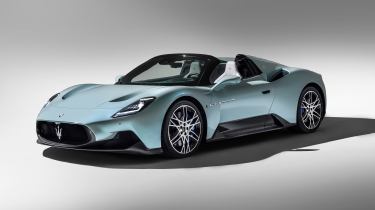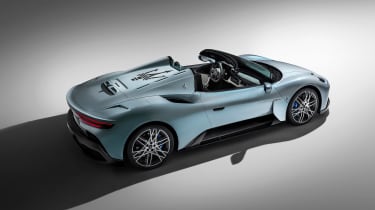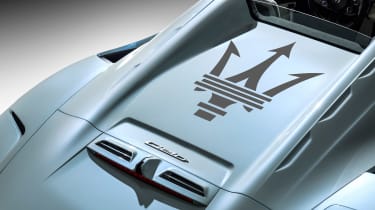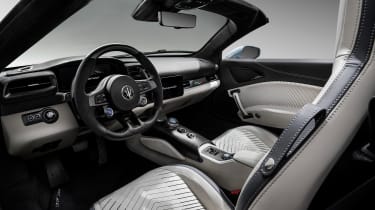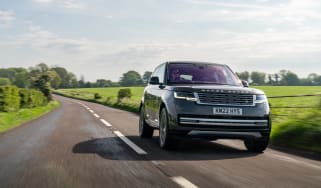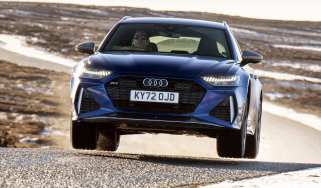Maserati MC20 Cielo debuts – new rival to the Lamborghini Huracan Spyder
The third pillar of the MC20 range after the coupe and Folgore EV is this Cielo Spyder
Maserati’’s MC20 supercar is about to become a whole range of supercars with the new open-top Cielo’s debut in Modena. Joining the excellent mid-engined coupe, with a pair of all-electric Folgore variants still to come, the new open-top Cielo is promising to pair the MC20’s unique driving experience with some wind in your hair action.
Like most modern open-top supercar variants, the MC20 Cielo was designed alongside the coupe from the very beginning of its development, ensuring there was as little compromise as possible in its performance and dynamic capability. All MC20s are built on a carbonfibre tub chassis (built by Dallara, no less) which means there’s inherently less effect on the convertible’s structural rigidity than if it were built from an aluminium spaceframe, something rivals like the Ferrari 296 GTB still utilise.
The two MC20s do have some structural differences though, with different layering and structure to the Cielo’s carbonfibre that stiffens key elements around the windscreen base. The overall effect is an impressively low variation in weight, with the convertible only weighing 65kg more than the coupe, despite incorporating an automated folding roof system.
The roof itself is made of electrochromic composite glass, or the sort that’s able to switch between clear and frosted when an electrical current is passed through its internal layer. This, together with the vertically-mounted rear glass, that’s able to be independently raised and lowered in just 12secs, opening up the cabin to the elements while also giving the exterior a very different aesthetic.
This is something defined by the two buttresses that sit either side of the tonneau, replacing the Coupe’s flowing roofline and clear engine cover. For those missing the Coupe’s oversized Maserati graphic that’s embedded into the composite, buyers can specify a huge Trident decal made from a matte aluminium film. The exterior design is otherwise fairly clean, with more gentle nods to Maserati’s typical triple portholes just about visible on the rear deck, and the side intakes now sat freely on the rear haunches.
Along with the standard Cielo, Maserati will offer an initial batch of PremaSerie launch editions painted in an eye-catching combination of Aquamarina metallic paint outside matched with a silver Alcantara interior. The effect lightens up the MC20 coupe’s rather motorsport-derived aesthetic, and paired with the new diamond cut wheels makes it look more opulent – an effect that suits the Cielo’s more extravagant mantra.
Maserati hasn’t made many changes to the Cielo’s technical package, sharing the same Nettuno 3-litre V6 engine with its pre-chamber combustion technology. Key figures mirror the coupe with 626bhp on tap, and 538lb ft of torque available between 3000-5500rpm. Drive is sent to the rear wheels via an eight-speed dual-clutch transmission, and there’s the same adaptive dampers, double-wishbone suspension and electronically-controlled limited slip differential too, with no major differences in their calibrations. With the coupe weighing in at 1475kg, the Cielo’s aforementioned 65kg weight gain will sit it at 1540kg, a fair chunk lighter than rivals like the Lamborghini Huracan Spyder.
There’s also a spread of new tweaks that will come alongside the Coupe’s subtle MY23 update, including new parking assistance functions, and an optional set of carbonfibre wheels that Maserati claims drops 30kg from the MC20’s unsprung weight.
With 35 per cent of the super sports car marketplace going to open-top derivatives, it’s no surprise to see Maserati making so much effort to make sure it competes with the strongest possible product, but what’s really refreshing to see is how versatile the MC20’s character is already proving to be. Bring on the all-electric Folgore models…

